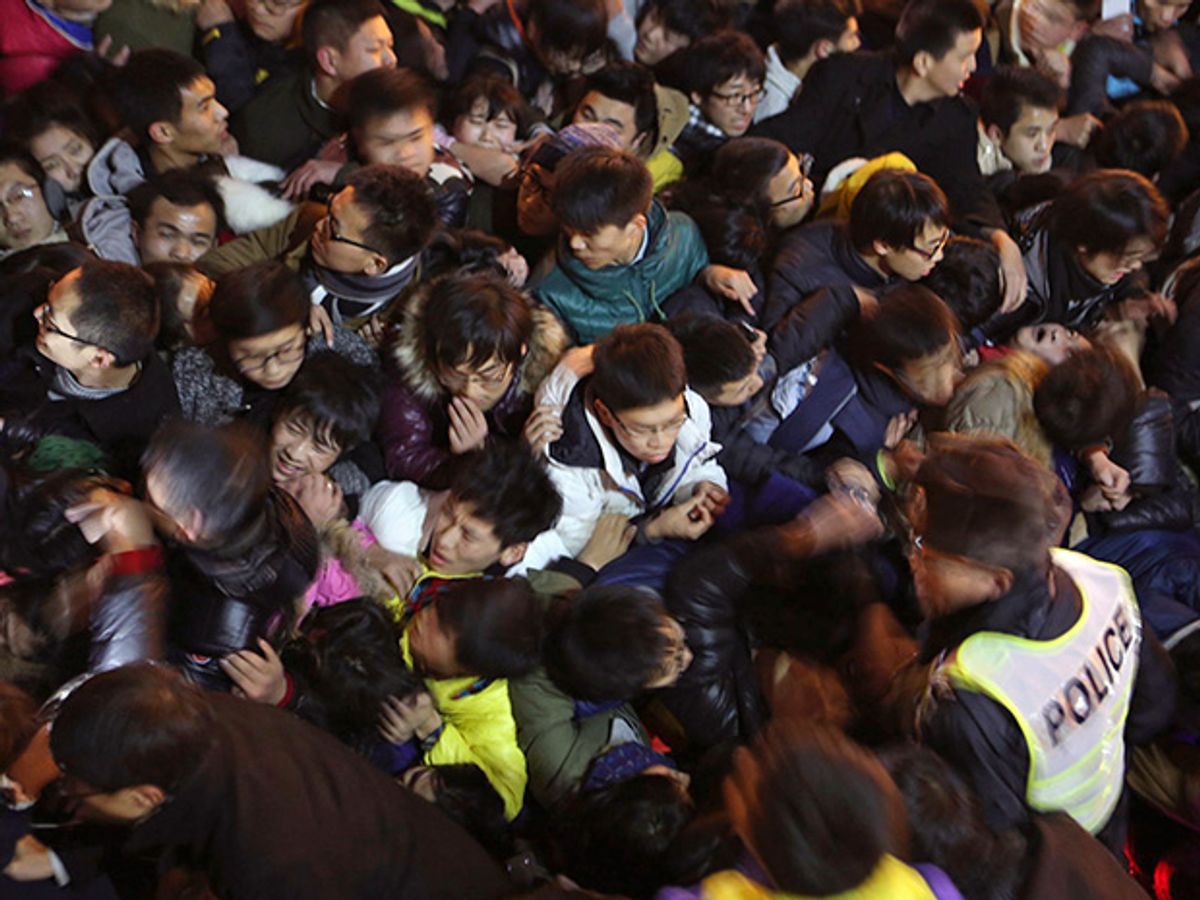
On 31 December 2014, approximately 300,000 people packed Chen Yi Square on the riverfront of the Bund in Shanghai to watch the New Year’s Eve light show. The popular, bedazzling event took a tragic turn when observers on a stairway to the waterfront mistook a sudden shift in crowd traffic for something more sinister. Panic and confusion caused a chaotic stampede, resulting in 36 dead and about 50 injured.
Jian Ma, a researcher at Southwest Jiaotong University, in China, is trying to better understand the events of the Shanghai stampede. “Right now, we do not have enough insight into why people choose their escape in such an irrational way,” he says.
Civil engineers have been modeling evacuations during these kinds of emergencies and disasters for decades, but they haven’t been able to completely capture the way a hammering heart or a body zinging with adrenaline can alter a person’s behavior during a crisis. A new approach that integrates the concept of “fuzzy logic” can make computerized crowds behave more like hysterical humans.
Typically, computers answer questions with an absolute truth (either yes or no, 0 or 1). Fuzzy logic, on the other hand, understands truth on a sliding scale, where the answer can be “maybe.” When applied to a model of pedestrian traffic, it can account for emotions like fear, panic, and anxiety, and it can show how each variable influences how fast a crowd evacuates. These fuzzy models can more accurately reflect pedestrian behavior like that seen during the stampede in Shanghai, according to Ma.
Ma cochaired a special session on intelligent pedestrian traffic and evacuation dynamics at this week’s 18th IEEE International Conference on Intelligent Transportation Systems (ITSC2015), where several papers investigating fuzzy logic pedestrian models were presented.
One of those studies, led by a research team at the Polytechnic University of Bari, in Italy, involved creating an algorithm that incorporated fuzzy perception and anxiety among people in an evacuating crowd. Although the algorithm could create many scenarios, the study focused on how pedestrians evacuated a simulated layout of the Bari International Airport’s first floor. The engineers programmed different numbers and types of escape routes, and measured pedestrian flow and evacuation outcome.
“In our opinion, [the simulations] are similar to reality,” says Mario Marinelli, one of the researchers. “We can see the uncertainty in choosing between exits.”
The model could also re-create specific panic-induced behaviors, such as herding and milling. Traditionally, probability theory has been used to measure uncertainty in such models, but those models could only quantify the occurrence of an event—for example, whether or not an individual in a crowd would make it out of a burning building, according to Marinelli. They did not capture the properties that fuzzy logic models can.
“In my opinion, the best way to model pedestrians and uncertainty is fuzzy logic,” says the study’s lead researcher, Mauro Dell’Orco. “Basically, in every field in which human reasoning is necessary, we can model it through fuzzy logic.”
With Oculus VR aiming to lower prices of its virtual-reality system from US $1,500 to below $400, engineers are also starting to turn to this technology for their evacuation simulations. At the Bowie State University Virtual Reality Laboratory, in Maryland, computer scientist Sharad Sharma has created 3-D evacuation simulations for the Oculus Rift of airplanes, subways, and campus buildings, several of which relied on fuzzy logic.
“Humans are not like robots,” says Sharma, who did not present at ITSC2015. Researchers could use the fuzzy logic model “to figure out how people really respond. It’s important in saving people’s lives,” he says.
Engineers hope their findings from fuzzy logic models can assist building and city designers as well as government officials. The models could also help create better designs for pedestrian traffic networks.
It is important to rethink existing methods of quantification, which tend to be simplistic, says Ma. Fuzzy logic is one way “this behavior could be quantified. We can evaluate the risk of evacuation and provide alternate designs to make the public much safer.”



